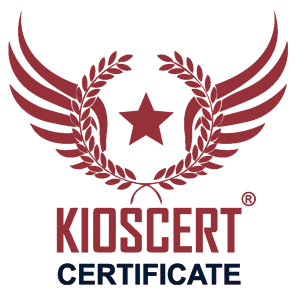
What is CE marking and why is it necessary?
The CE marking is a conformity mark indicating that products placed on the market in the European Economic Area (EEA) meet essential requirements related to human health, safety of life and property, and environmental protection. CE, an abbreviation of the French term “Conformité Européenne,” signifies the manufacturer's declaration that the product complies with relevant EU directives and technical regulations. This marking is not a quality symbol but a commitment to safe use and legal compliance.
A product bearing the CE marking can circulate freely within EU countries. However, this is valid not only when the mark physically appears on the product but also when there is a robust conformity assessment process and technical documentation behind it. The CE marking grants manufacturers access to the European market while assuring consumers of the safe use of the product.
Definition
CE marking is an official symbol indicating that a product is manufactured in compliance with European Union regulations and meets required safety standards.
Compliance requirements for EU technical regulations
The European Union has published technical regulations for many sectors to ensure that products are designed and manufactured in a way that does not harm human health, safety, or the environment. Products bearing the CE marking must comply with these regulations. This includes specific regulations for a wide range of product groups, from toys to machinery and electronic devices, medical devices, and construction materials.
Compliance begins by meeting the basic requirements of the relevant regulation. For example, an electrical device must consider multiple regulations such as Electromagnetic Compatibility (EMC), Low Voltage Directive (LVD), and RoHS. The manufacturer must analyze these requirements, prepare the appropriate technical documentation, and conduct conformity assessment processes under the correct module. This way, the product attains a valid status in all countries within the EEA.
CE marking obligation by product groups
CE marking is mandatory for product groups subject to certain European Union directives. However, not every product requires CE marking. The technical structure, intended use, and target market of the product determine this obligation. Product groups with health, safety, and environmental risks are particularly covered under CE marking.
Major product groups requiring CE marking include electrical equipment, machinery, medical devices, gas appliances, pressure equipment, toys, construction materials, and personal protective equipment. Some products may fall under multiple directives. For example, a medical device may be subject both to the Medical Device Directive and the Electromagnetic Compatibility Directive.
- Electrical Products: Evaluated under the LVD and EMC directives.
- Machinery: Safety systems and protective measures are required under the Machinery Directive.
- Medical Devices: May require notified body assessment before CE marking, depending on classification.
- Toys: Must pass physical, chemical, and mechanical tests according to the EN 71 series standards.
Note
Using CE marking for a product group not subject to it is prohibited and considered misleading.
Preparation of technical file and risk analysis
The technical file forms the basis of the conformity assessment process for a CE marked product. It must contain all technical details, design criteria, test results, and risk analysis of the product. This file can be inspected not only by the manufacturer but also by competent authorities. A fully prepared technical file provides concrete evidence that the product complies with relevant regulations.
The technical file should include main sections such as product description, technical drawings, parts lists, applicable standards, test reports, manufacturing processes, and user manuals. The risk analysis, a critical component, identifies potential hazards and documents measures taken to mitigate them. The risk analysis must anticipate threats during both manufacturing and after the product is placed on the market.
Technical File Content
Includes product design, compliance with standards, test certificates, and user instructions in detail.
Risk Analysis Process
All usage scenarios are evaluated, and potential risks and precautions are documented.
Module selection and conformity assessment
One of the most critical steps for manufacturers in the CE marking process is correctly determining the conformity assessment module. The European Union has defined different assessment modules based on product risk levels. For low-risk products, the manufacturer's declaration may suffice, while high-risk products require notified bodies' inspections and testing. Therefore, module selection must be carefully made according to the product's structure, function, and directive requirements.
Different module types range from Module A to H and determine the product's assessment process. For example, in Module A, the manufacturer can make a declaration based on their technical file; however, in the Module B+C combination, the notified body must conduct type examination and certain production audits. Module selection directly affects not only the scope of certification but also its cost, duration, and time to market.
Tip
When choosing the conformity assessment module, the annexes of the directive under which the product is classified must be consulted, and all conditions must be clearly documented in the technical file.
KIOSCERT's notified body support
For high-risk product groups, using the CE marking may require evaluation by a notified body. In such cases, manufacturers are subject not only to preparing a technical file but also to an inspection conducted by an impartial third-party organization. KIOSCERT is an authorized notified body in this field, conducting conformity assessment activities internationally recognized within the CE process.
KIOSCERT performs type testing, production quality management system audits, or product inspections under the relevant module according to the product type and applicable directives. All these procedures enable the manufacturer to legally substantiate the declaration of conformity with EU legislation. The documents and reports prepared after inspection are recognized by EU authorities and hold official validity during import procedures.
Marketing advantage with CE certificate
CE marking is not only a conformity indicator but also a marketing tool. For companies wanting to operate in the European market, CE marking proves that their products can be legally sold. This is not limited to EU borders; CE marking is associated worldwide with “safe product” perception and seen as a preference criterion.
Products bearing the CE mark benefit from advantages in tenders, accelerate export processes, increase customer confidence, and positively impact the brand’s international reputation. Since it signifies documented technical competence, highlighting it in corporate presentations and marketing materials provides significant added value. In the increasing global competition, CE marking has also become a part of branding.
Ease of Export
CE marking enables free circulation of products within Europe.
Advertising and Promotion Power
Compliance with international standards enhances brand reputation and customer trust.
